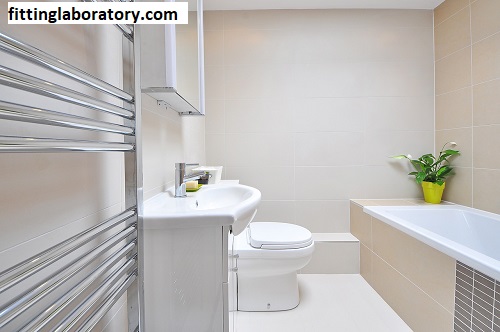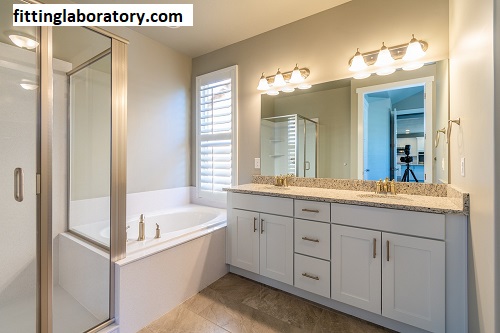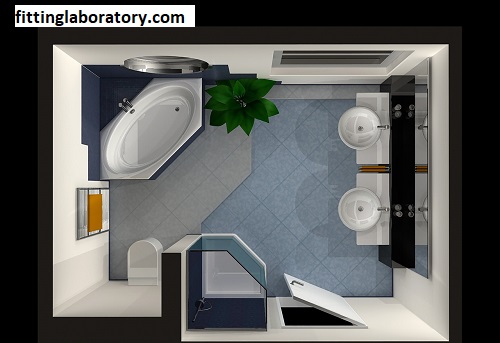A Guide to Bathroom Fittings: Unlock the Secret of An Enhanced Bathroom Space
Fittings:
Fittings bathroom-one time was regarded as a simple and utilitarian room over time transformed into an integral part of the modern home. This is because bathroom fittings can make the difference between a basic room and a luxurious retreat. Not only do bathroom fittings serve to complete the practical purpose, but they also serve to add and enhance the aesthetic and comfort value of a space.

From taps and showers to toilets and mirrors, all things make a difference. In this definitive guidebook, we shall see what bathroom fittings are, how to select them, and answer some of the frequently asked questions that help you decide the right ones when equipping your bathroom.
What Are Bathroom Fittings?
Fittings:
Bathroom fittings are referred to as components, accessories, and parts of plumbing used in bathrooms. These include the essential ones such as sinks, faucets, showers, bathtubs, and toilets, as well as accessory ones such as towel rails, mirrors, and storage units. Bathroom fittings also have specialized equipment designed for convenience and safety purposes, such as grab bars, and bidets.
Bathroom Fittings Types:
Fittings:
1. Toilets
A toilet is one of the essential bathroom fixtures, which has different varieties and mechanisms. Some of the common types of toilets are:
- Floor-mounted toilets: The most common ones are the traditional, fixed type that rests on the floor. They are less expensive most of the time.
- Wall-mounted toilets: The term given to toilets mounted on the wall is the “floating toilet.” It gives a slim, sleek appearance, but it spares floor space, which can help make the bathroom look more open and airy.
- Squat toilets: These are mostly found in other countries attached to the ground where the user squats rather than sitting.
- Smart toilets: Advanced features include heated seats, bidet function, self-flushing, and self-cleaning.
The most important considerations when choosing a toilet include space available, water efficiency, and ease of maintenance.
2. Sinks and Washbasins
Sinks or washbasins, are among the most important facilities in a bathroom. They are used for hand washing, tooth brushing, shaving, and other personal hygienic purposes. Depending on their size and types, it is possible to categorize them into several sub-types including:
- Pedestal sinks These possess a single base, supporting the basin. They mainly apply to small bathrooms for they help save space inside such facilities.
- Countertop sinks These are designed to stay on top of a countertop or vanity. They come with a modern look and are generally used in larger bathrooms.
Undermount sinks These go under the countertop, giving a nice line-free appearance and easier cleansing.
Vessel sinks These are bowl-like containers that are placed on top of the counter for a bold and contemporary style.
Sink materials could be ceramic, porcelain, glass, and stone, and each has its maintenance besides aesthetic value.
3. Shower and showering systems
Fittings:
Shower cubicles: fully enclosed spaces in the shape of a room with a door that is generally made from glass, creating a contained, modern shower experience.
- Walk-in showers: the shower is an open concept and does not have a door; sometimes with a glass partition to contain the water.
- Shower units: These are integrated units that contain a showerhead that could accompany massage jets, handheld showerheads, and even steam output.
- pans: The bottom or floor section of the shower, and are usually made of acrylic, stone resin, or fiberglass.
Heads also range among several types, including rain showerheads, handheld showerheads, and multi-function showerheads. The style of the shower you use can determine the final structural look, and how much space your bathroom will use.
4. Bathtubs
Most modern bathrooms prefer showers, but bathtubs do still come in handy for relaxation and comfort. They can be classified as follows:
- They are free-standing bathtubs: free-standing bathtubs that are not necessarily surrounded by a frame in comparison, they stand all alone offering an oval or claw-foot style that gives a luxurious look, the old school
- Built-in bathtubs: these have a frame that houses them – most of the time, a standard bathtub like any ordinary family home.
- Whirlpool and Jacuzzi Bathtubs: Tubs with jets built-in that give hydrotherapy advantages, so they are perfectly designed for relaxation and stress relief.
- Bathtubs are also manufactured in several types such as acrylic: cast iron, and stone, so those have implications within aesthetics and maintenance.
5. Taps and Faucets
Taps or faucets function to regulate water flow to sinks, bathtubs, and showers. They come in a lot of styles and types:
- Mixer taps Both hot and cold water mix under one spout for increased control over the temperature of the water compared with other faucets.
- Thermostatic tap: Usually keeps temperatures set, thermostatic taps can be especially handy when attempting to prevent scalding or discomfort while using the faucet to wash with.
- Single-handle faucets: One lever is adjusted to regulate temperature and flow with one faucet.
- Dual-handle faucets: These faucets have separate handles for hot and cold water, so you have perfect control.
- The finish of faucets and taps (chrome, brushed nickel, gold, matte black) could make a huge impact on the overall look of the bathroom.
6. Mirrors and Cabinets
Fittings:
Mirrors are one of the most basic bathroom fittings, both a practical tool and aesthetically pleasing. Shapes, sizes, and designs range from basic wall-mounted mirrors to more considerable mirrored cabinets with storage space.
- Wall mirrors: These are the most readily available ones and can be plain or framed with a pretty accent.
- All-magnifying mirrors: These are small mirrors used for shaving or applying cosmetics.
- Medicine cabinets: These mirror cabinets carry a small storage area, which is excellent for keeping toiletries and bathroom essentials organized.

7. Bathroom Accessories
The term bathroom accessories refers to those smaller items that add functionality and comfort to the bathroom space:
- Towel rails and towel bars: Hang towels neatly and dry.
- Toilet paper holders: Wall-mounted or freestanding toilet paper holders.
- Soap dishes and dispensers: Holds soap or dispenses liquid soap.
- Storage units: Vanity units, shelving, and other bathroom storage units.
8. Lighting
Good lighting is desirable in any bathroom for utility and ambiance. Some available lighting include:
- Ceiling lights: Overall illumination.
- Vanity lights: Positioned above or beside mirrors for the maximum possible illumination for grooming activities.
- Accent lighting: It highlights and creates beauty within bathrooms while getting attention to certain aspects, such as artwork, architectural aspects, etc.
How to Choose Bathroom Fittings?
Fittings:
The following considerations need to be made during the selection of bathroom fittings:
- Space and Layout: Measure your bathroom space properly for proper fitting selection and make sure that the fittings are not cluttering the room. Consider the plumbing and electrical outlet layouts.
- Style and Design: Choose a fitting that would suit the general style of your bathroom design. Whether it is a modern look, traditional, or minimalist, there is a fitting that will match your needs.
- Water Efficiency: Choose fittings that assist in saving water. Low-flow faucets and double-flush toilets are some popular fittings becoming standard in reducing water consumption and thereby energy consumption.
- Material Quality: Your fixtures must be able to withstand water and daily use. Stainless steel, brass, and chrome are great options for faucets, shower heads, etc.
- Budget: Without losing the aesthetic value, Fitting it is very important to strike between quality, quantity, and affordability.
Frequently Asked Questions (FAQs):
Fittings:
1. What are some of the most popular materials for bathroom fittings?
The most used materials for bathrooms are ceramic, Fitting porcelain, stainless steel, chrome, brass, and tempered glass as they are strong, water resistant, and require minimal maintenance.
2. What are the benefits of wall-mounted toilets?
Wall-mounted toilets save space, giving the bathroom a cleaner and fitting a more modern look. Also, cleaning the bathroom floor is easier without a base to clean around.
3. Is it possible to include a bidet in my bathroom?
Yes, most bathroom facilities may include a bidet,Fitting which can be a freestanding device or a bidet attachment to a toilet. This provides more hygiene and comfort.
4. How do I select a showerhead?
Then, consider the shower type you prefer – rainfall, Fitting handheld, or multi-function, the water pressure in your area. Then, find water-saving models to save some water.
5. What are the smart bathroom fittings benefits?
Smart bathroom; thermostatic taps, Fitting automated toilets, sensor-activated faucets, more convenience, and better water efficiency, quite a posh bathroom experience
6. How to make my bathroom fittings last longer?
Regular cleaning, proper maintenance, Fitting, and making sure your bathrooms are of higher quality will make them last longer. Always follow the care instructions provided by the manufacturer.

Conclusion:
Fittings:
Bathrooms are not only about functionality, but a lot about how you will wish your bathroom to look and feel, considering the comfort. In essence, Fitting it is possible to have a bathroom that is both practical and aesthetically pleasing by having the appropriate right-hand selected.